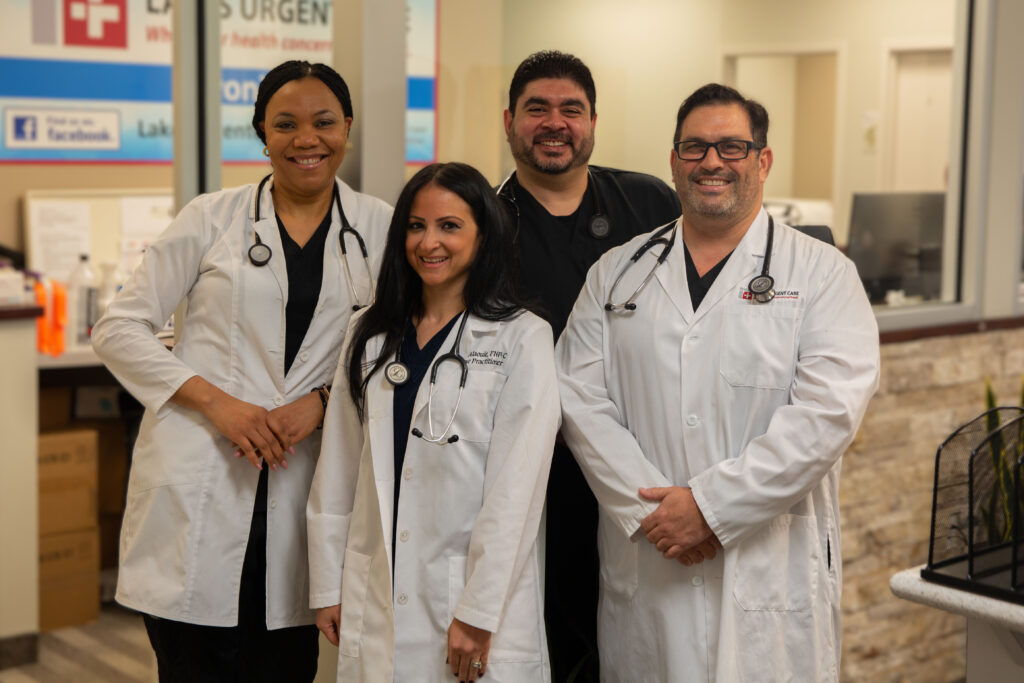Featured Questions:

All Questions
Click on a question or topic below to learn more.
Burns
Aside from sunburns, the most common household causes are scalds, contact with hot surfaces, electrical and chemical burns. Burns are further classified into first, second and third degree based upon the depth and tissue involved in the burn injury. A good rule of thumb is if blisters develop, the burn is a second-degree burn. Seek medical attention if the burn is second or third degree, is larger than 3 inches in diameter or involves the face, hands, joint surfaces, or genitals, especially in children and the elderly. Also seek medical attention if the burn looks like it may be infected (swelling, pus or red streaks nearby) or if the source of the burn is from an electrical plug or wire. The best place to get qualified medical attention for burns is at a certified urgent care like Lakes Urgent Care, your primary care physician, or in hospital emergency department.
After removing the source of the burn, immerse the burn in cool water or apply a cool compress for 10-15 minutes. Never apply ointments, butter or grease to a burn as this can lead to infection. Do not apply ice directly to a burn as it can cause additional destruction to the already delicate skin involved. Avoid breaking any blisters if they form. Once cooling has been completed, dry the area involved and cover the burn with a clean cloth, sterile gauze or non-adhesive bandage. Over the counter pain medications such as acetaminophen or ibuprofen are safe to use to help with discomfort. Once the initial burn discomfort has subsided, you can apply 100% pure aloe gel.
Scalding water, hot stoves and unsecured electrical plugs are the most common sources of burns within the home, especially with small children. In the kitchen, never leave a hot stove unattended and make sure to turn pot handles inward so they cannot be pulled down by a child. Never cook over a stove while holding a small child. Place them safely in a high chair nearby. Do not heat baby bottles in microwaves due to uneven heating and risk of oral burns. Set hot water tank thermostats to less than 120F and always check water temps with your wrist or elbow. In the bathroom, secure any hot items such as curling irons, clothes irons and unplug hair dryers to avoid children pulling these items off counter tops resulting in mechanical injury or burn.